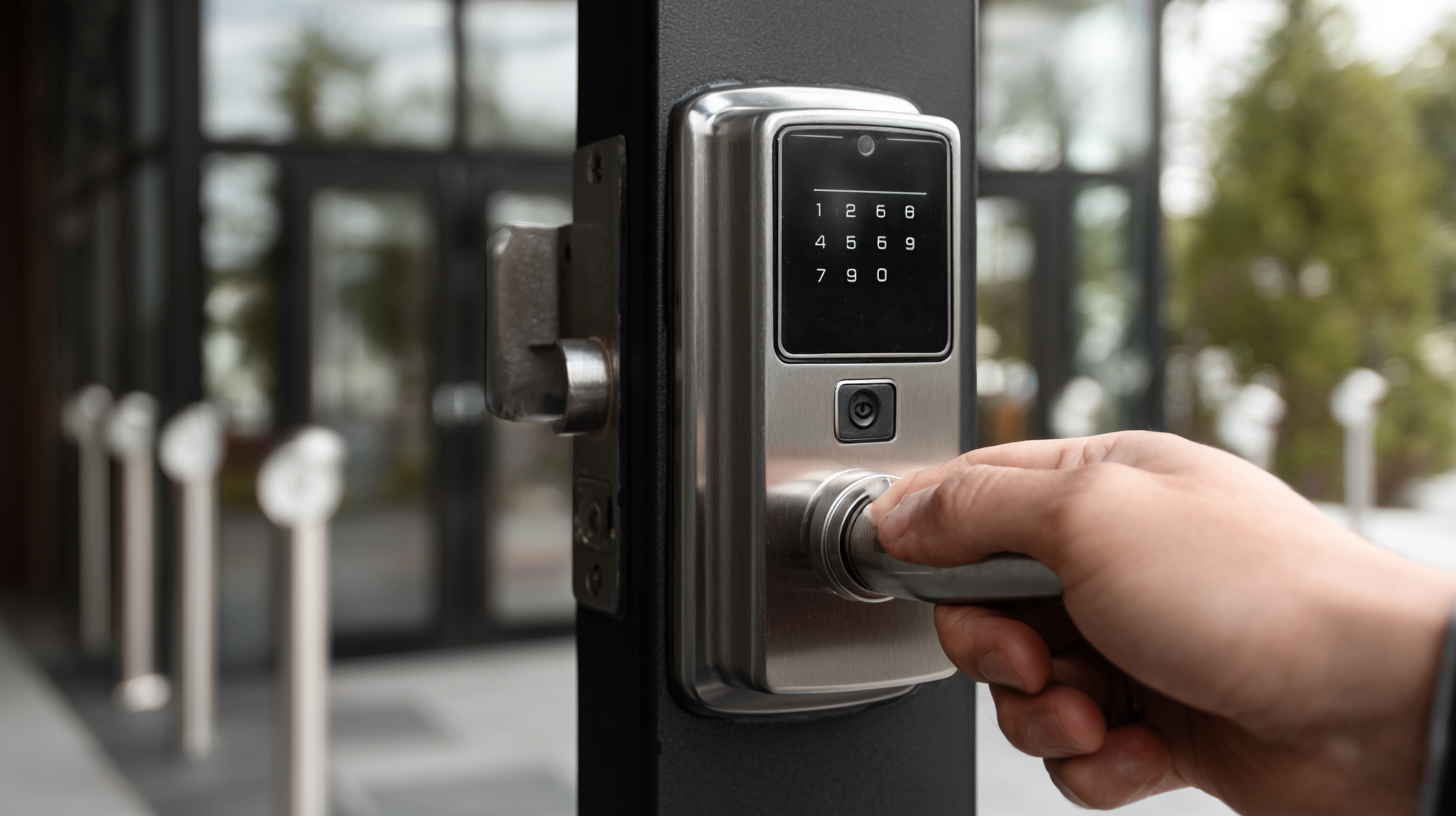Unlocking the Advantages of Access Control Security for Global Procurement
In today’s global procurement landscape, the importance of robust Access Control Security cannot be overstated. As organizations increasingly rely on digital platforms for their supply chain management, they face growing risks associated with unauthorized access and data breaches. According to a recent report from MarketsandMarkets, the global access control market is projected to reach $13.4 billion by 2026, driven by the need for enhanced security measures across various sectors.

Effective access control systems not only safeguard sensitive information but also streamline operations by ensuring that critical data is accessible only to authorized personnel. This blog will explore top strategies that businesses can implement to leverage Access Control Security, ultimately enhancing their procurement processes while mitigating risks and fostering a more secure operational environment.
Benefits of Access Control Security in Global Procurement Management
In today's interconnected world, global procurement management presents unique challenges that can be effectively addressed through robust access control security. One of the primary benefits of implementing access control measures is the enhancement of data protection. With sensitive information being constantly exchanged across borders, ensuring that only authorized personnel can access pertinent data minimizes the risk of breaches. This is particularly crucial in a procurement environment, where misinformation or fraudulent activities could lead to significant financial losses.
Moreover, access control security can streamline operations and improve efficiency. By restricting access to specific functions based on an individual's role, organizations can better manage workflows and reduce the likelihood of errors. For instance, procurement teams can implement tiered access systems where suppliers, internal stakeholders, and financial reviewers each have specific permissions. This not only fosters collaboration across different regions but also ensures accountability, as actions can be tracked to specific users. Ultimately, effective access control contributes to smoother operations within global procurement, making it a vital component for organizations aiming to thrive in an increasingly complex marketplace.
Key Technologies Driving Access Control Innovations
Access control security has rapidly evolved, driven by technological advancements that enhance safety and streamline processes within global procurement operations. Key innovations such as biometric authentication, smart cards, and mobile access technologies are transforming traditional access control systems into highly effective security solutions. These technologies not only restrict unauthorized access but also ensure that only verified personnel can interact with sensitive procurement data, thereby minimizing the risk of data breaches and fraud.

Moreover, the integration of IoT (Internet of Things) devices plays a crucial role in modern access control strategies. IoT-enabled devices can monitor access points in real-time, providing valuable insights into user behavior and access patterns. This data-driven approach allows organizations to quickly adapt their security measures and address vulnerabilities as they arise. As procurement becomes increasingly global and interconnected, leveraging these key access control technologies is essential for maintaining operational integrity and safeguarding critical information in the supply chain.
Strategies to Implement Effective Access Control Systems
Implementing effective access control systems is essential for organizations engaged in global procurement. These systems not only protect sensitive information but also streamline processes by ensuring that only authorized personnel can access critical resources. One key strategy is the use of role-based access control (RBAC), which assigns permissions based on an individual's role within the organization. This minimizes the risk of unauthorized access while simplifying the management of access permissions across diverse teams and locations.
Another important strategy is the integration of biometric authentication solutions, such as fingerprint or facial recognition. These technologies enhance security by providing a unique identification method that is difficult to replicate. Coupled with real-time monitoring and alerts, organizations can promptly respond to any suspicious activity, thereby bolstering their overall security posture. Additionally, regular training and awareness programs for employees about the importance of access control can help foster a security-conscious culture within the organization, ensuring that all team members understand their role in safeguarding sensitive procurement processes.

Addressing Challenges in Access Control for Global Supply Chains
In today’s interconnected world, access control security has become paramount for global supply chains. The increasing complexity of international procurement processes presents unique challenges, such as unauthorized access to sensitive data, potential sabotage, and regulatory compliance. Effective access control measures ensure that only authorized personnel can handle critical assets, from materials to information, mitigating the risks associated with supply chain vulnerabilities.
Moreover, adapting access control systems to accommodate diverse regulatory environments across different countries is pivotal. Companies must navigate various legal frameworks while implementing uniform security protocols. This requires a robust approach that not only safeguards assets but also maintains operational agility in the face of fluctuating global demands. By leveraging advanced technologies, including biometric systems and AI-driven analytics, organizations can enhance their access control mechanisms, thus fostering a resilient supply chain that is prepared to tackle emerging threats effectively.
Unlocking the Advantages of Access Control Security for Global Procurement - Addressing Challenges in Access Control for Global Supply Chains
| Dimension | Description | Challenge | Advantage |
|---|---|---|---|
| Authentication | User identity verification for access to systems. | Potential for security breaches if not properly secured. | Strong authentication reduces unauthorized access risks. |
| Authorization | Assigning permissions to users based on roles. | Complexity in managing user permissions across global teams. | Streamlined authorization processes enhance operational efficiency. |
| Monitoring | Continuous oversight of access activities. | Difficulty in real-time threat detection across multiple regions. | Enhanced monitoring tools improve risk management and response times. |
| Compliance | Adhering to international regulations and standards. | Variation in compliance requirements across countries. | Robust access control frameworks ensure global compliance. |
| Data Protection | Securing sensitive data from unauthorized access. | Data breaches can occur from inadequate protection measures. | Effective access controls safeguard sensitive information. |
Future Trends in Access Control Security for Procurement Efficiency
The future of access control security in global procurement is poised for transformative changes, particularly with the integration of artificial intelligence. As procurement processes become more intricate, organizations are increasingly looking to AI-driven solutions to enhance security measures. By automating access control, companies can not only streamline operations but also significantly reduce the risk of unauthorized access and data breaches. This shift allows for real-time monitoring and adaptability, ensuring that security protocols evolve in response to emerging threats.
Furthermore, the implementation of advanced machine learning algorithms can improve the accuracy of identifying and verifying users, minimizing human error and enhancing trustworthiness in procurement operations. As outlined in recent discussions surrounding the security challenges within the AI ecosystem, organizations must navigate these complexities to safeguard their assets effectively. Consequently, the convergence of AI and access control security not only enhances procurement efficiency but also sets a precedent for future innovations in the field, ensuring that businesses remain resilient in an ever-evolving digital landscape.
Unlocking the Advantages of Access Control Security for Global Procurement
This chart illustrates the impact of various access control security measures on procurement efficiency over the past five years.